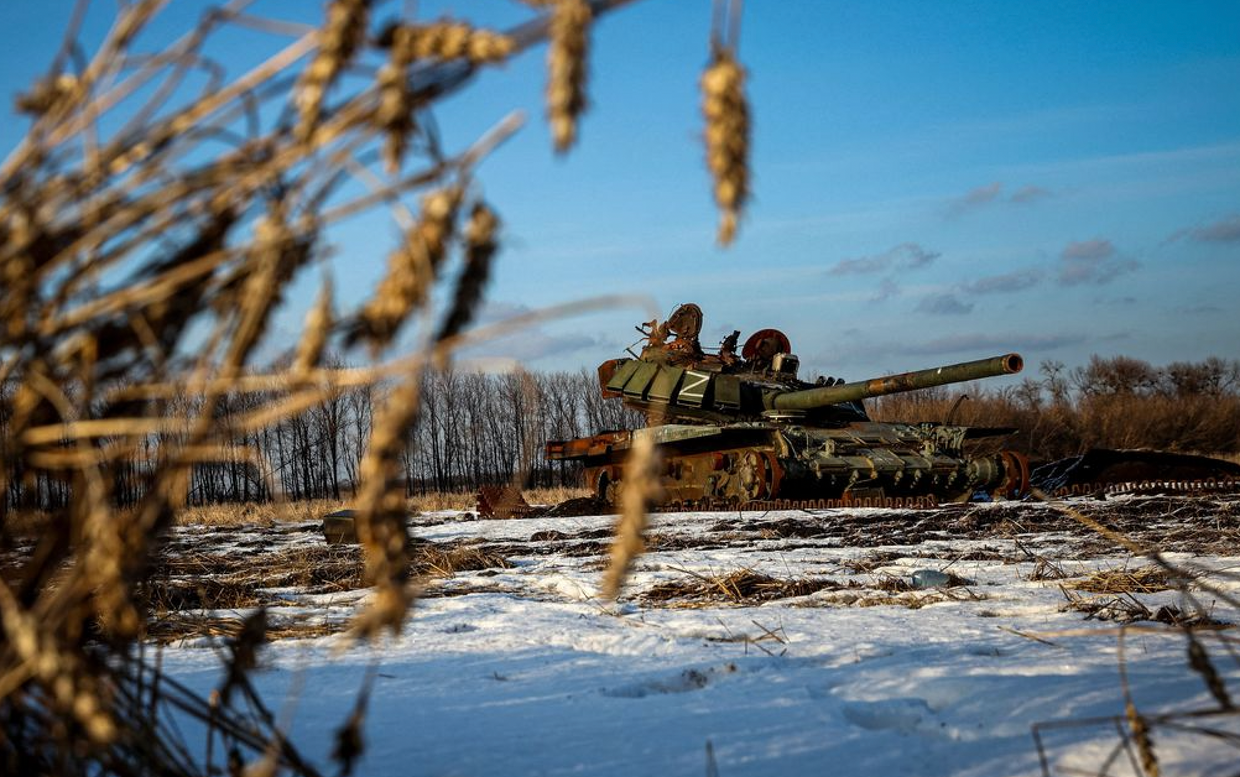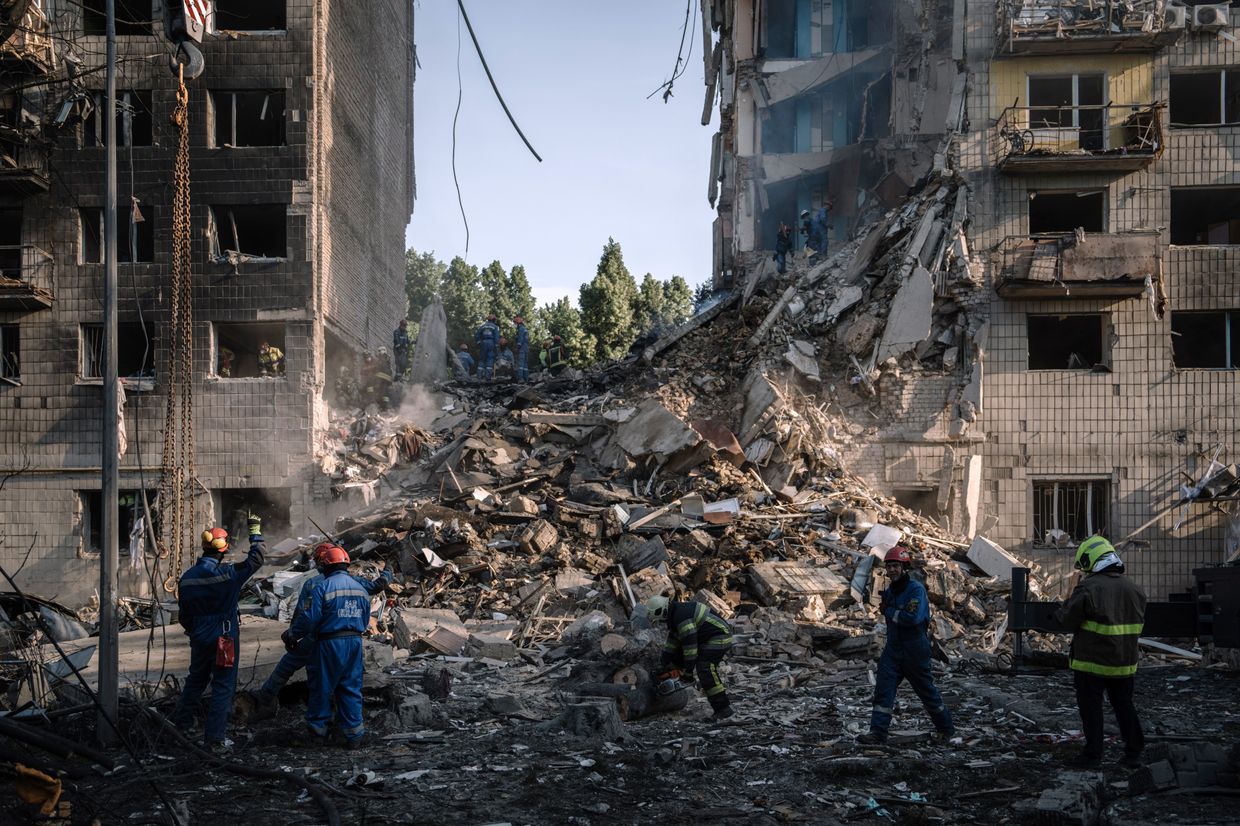Once described as "the best tank in the world" by Vladimir Putin, the T-90M recently hit a milestone that raises a few questions about the Russian president's appraisal.
According to the open-source investigative project Oryx, 100 of them have either been destroyed, damaged and abandoned, or captured on the battlefields of Ukraine.
With Russia's total tank losses last month surpassing 8,000, and only an estimated 67 T-90Ms in active service when Moscow launched its full-scale invasion, what does this say about the state of the Kremlin's armed forces?
How good is the T-90M?
It's not Russia's top-of-the-range tank, but it may as well be. That dubious honor goes to the T-14 Armata.
According to reports, there are around 20 Armatas in existence but Russia has yet to deploy them to Ukraine.
"This is highly likely due to the reputational damage of losing the 'prestige' vehicle in combat and the requirement to produce greater quantities of Main Battle Tanks (MBTs) which can only be satisfied with other variants," British Defense Intelligence wrote in a report on March 5.
As it is, the T-90M is the most advanced Russian tank deployed to Ukraine. The first T-90 first entered service in 1992, and the T-90M is the fourth iteration of the model, entering service in 2019.
"The T-90 essentially combines the proven chassis of the T-72 with the advanced systems housed in the T-80 turret," Martin J. Dougherty, weapons expert and author of "Aircraft, Tanks and Artillery of the Ukraine War," told The Kyiv Independent.
The main upgrades the T-90M received were a new turret and 125mm 2A46 gun, and a more powerful engine.
"This should have been a winning combination, and until the invasion of Ukraine the overall impression was positive," Dougherty said.

What happened in Ukraine?
Russia lost at least 100 T-90M tanks, according to the open-source investigative project Oryx. This includes those that have been completely destroyed, damaged and abandoned, and five incidents when they were captured by Ukrainian forces, Oryx found.
There have been several notable examples captured on video. In January, a T-90M was destroyed by two U.S.-supplied Bradley infantry fighting vehicles, in service since the early 1980s.
Some have suffered even more ignoble demises, like getting stuck in a crater.
"The T-90’s defenses were developed to counter traditional threats, and are less effective against the new generation of top-attack weapons," Dougherty said.
This is especially true of drones – both Russian and Ukrainian forces have adapted to what has been dubbed "the first drone war," and the internet is strewn with videos of T-90Ms being taken out with unmanned aerial vehicles.
But Dougherty points to another factor that plagues the Russian army as a whole, saying the high number of tank losses is often down to "inexperienced and poorly trained crews."
"Losses can also be attributed to mishandling by inept commanders," he adds.
Is 100 lost T-90Ms significant?
According to The International Institute for Strategic Studies (IISS), Russia had 67 T-90Ms in active service when it launched its full-scale invasion of Ukraine.
Given the Kremlin expected to sweep into Kyiv in a matter of days with a hero's welcome and minimal losses, losing more than the entire active inventory of T-90Ms available at the time is clearly of some significance.
As a result, Russian tank production was forced to increase, with the IISS estimating annual output as "about 40 before February 2022 to a wartime output of 60–70 for 2023, with possibly even more to be produced over the course of 2024."
"Based on this pattern, the production rate from 2025 could be more than 90 annually," it added.
So Ukraine will have to up its rate of destruction if it is going to have a hope of keeping the numbers of T-90M down.
But there are two other factors to consider – firstly, the IISS piece, titled "Russian T-90M production: less than meets the eye," highlighted several issues facing the Kremlin.
"To increase numbers, production lines at factories and foundries will have to be either restarted… or built from scratch," it said.
"Despite increases in the production of newly built tanks relative to peacetime output, supplying enough tanks to offset current attrition rates is likely to become more challenging."
Then there is the fact that Russia has a lot of other models of tanks, and Ukraine has been taking out even more of those.
Last month, figures released by Ukraine passed the 8,000 mark, and the total as of July 18 stood at 8,245.
Passing the 8,000 mark prompted much debate over whether or not Russia is running out of tanks and what this means for the war in Ukraine, with some estimates suggesting that by 2026, the Kremlin won't have the means to replenish front-line positions.

But Sascha Bruchmann, visiting research fellow for defense and military analysis at the IISS, warned against thinking simply in terms of a trajectory of every decreasing number.
"War is dynamic, so just putting a current number in a trajectory won't give us the right story," he told the Kyiv Independent earlier this month.
"It's tough to then write 'yeah, in two years Russia will lose the war because they ran out of tanks,' because that's not how it's going to happen."
Tanks are at their most useful in an offensive capacity, but as Ukraine demonstrated last year, they need to be deployed in substantial numbers to make a difference.
Although Russia is currently on the offensive, its advances are grindingly slow and will likely only get slower as the number of tanks it has available decreases.
All of this plays into an increasingly attritional war, which, unable to liberate more land, does not bode well for Ukraine.
"It will inhibit Russia's ability to take more territory or make it more costly," Bruchmann said.
"But if the Russians have proved anything, it's that they're willing to take costs."














